We use cookies and other technologies to personalize your experience and collect analytics.
Rene Daniels
Rene Daniels
19 September – 16 November 2024
Modern Art is delighted to announce an exhibition of paintings by René Daniëls, his third with the gallery. The seven paintings, most of which have never been exhibited, span the formative period of 1980 to 1984, prior to and prefiguring the development of his signature 'bowtie' motif. Early works from this period are mainly figurative, notably loose in brushwork, and made up of several layers often revealing traces of underpaintings. Superimposed figures appear as dreamlike apparitions, floating over the canvas and dissolving into inanimate objects. Together this body of work shows how Daniëls used mysticism, ceremonial rituals, as well as woodland and jungle environments as iconography to probe the lexicons of art history and mechanisms of the art market.
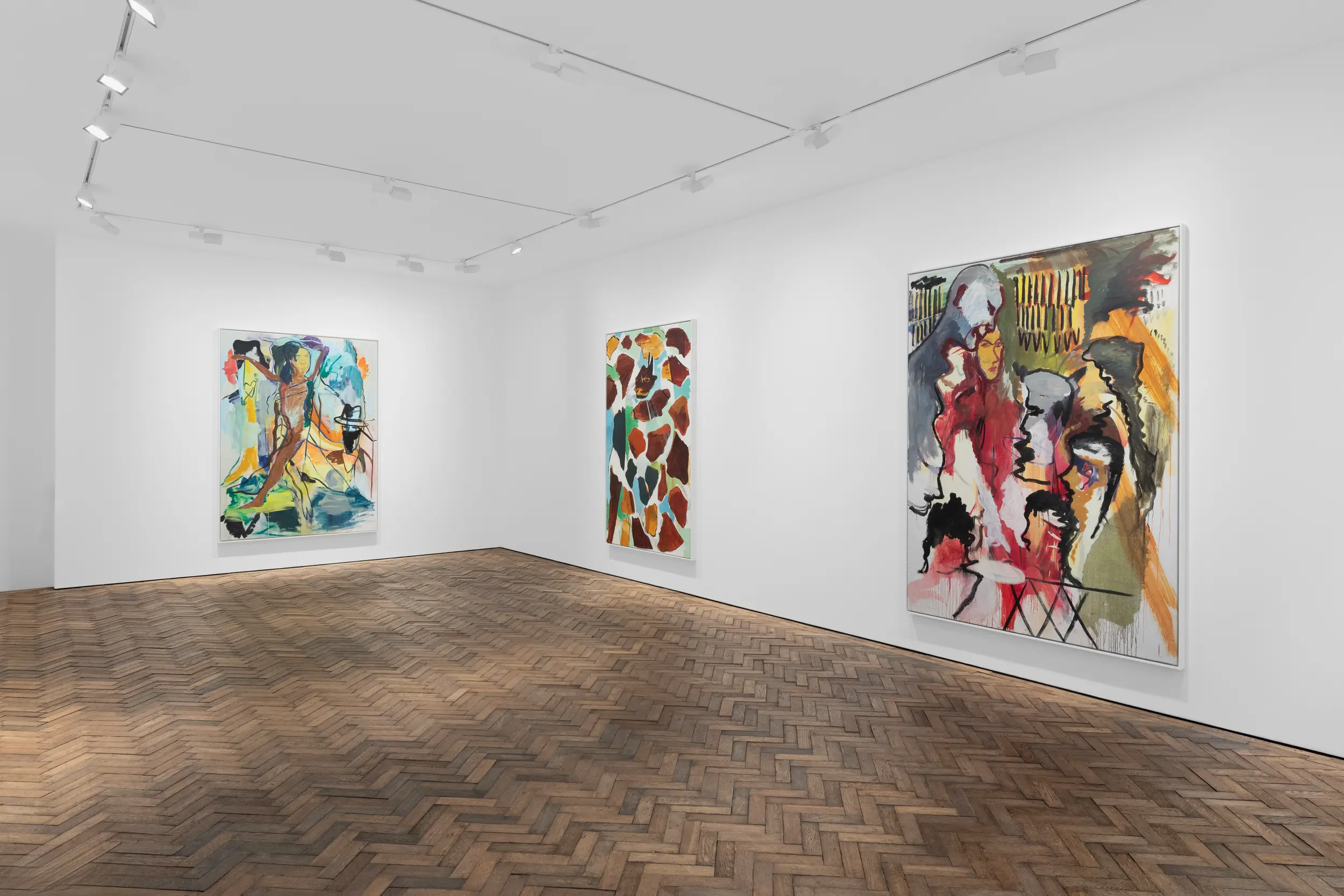
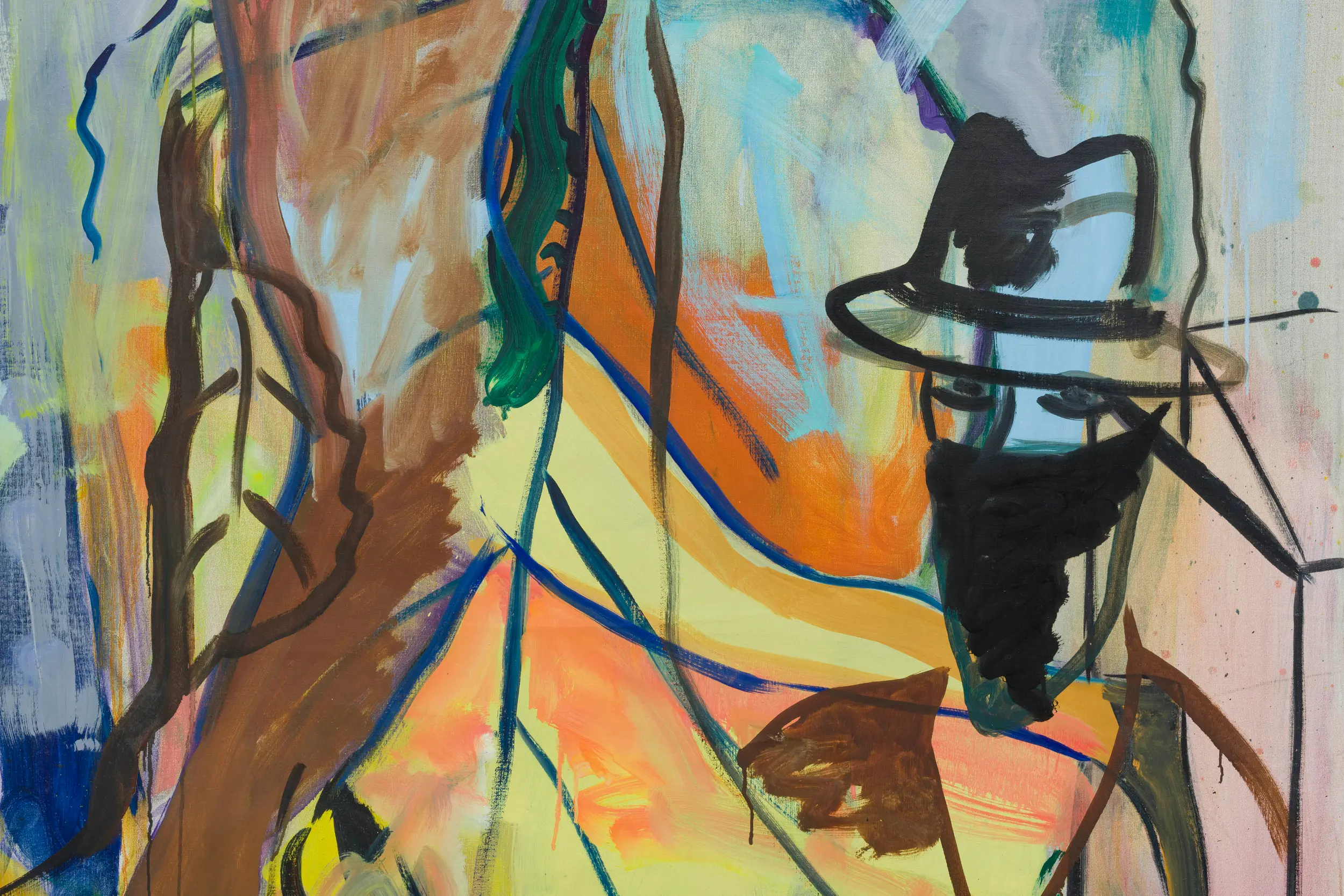
Art itself has been the subject of his paintings throughout his oeuvre; what defines an artwork, how it is interpreted, exhibited - and most poignantly - how it is assigned value. Daniëls often worked cyclically, returning to certain compositions repeatedly, changing small details with each new work. Every iteration shows him ushering his subjects’ transition toward an unknown destination. His urge for transformation is especially evident in De fontein in Afrika, a painting he reworked after it was originally exhibited in 1984. The outline of a giraffe is overlayed by the pattern of its skin; only visible in the brown segments left translucent. The painting fuses different perspectives: the foreground with the background, and the sign with its interpretation. He found “objects and ideas always appear twice, once as a reality and later as the idea for a work.” These foundational paintings give insight into an artist who sought to refine his pictorial language through developing an interconnected web of double entendres and multilingual puns.
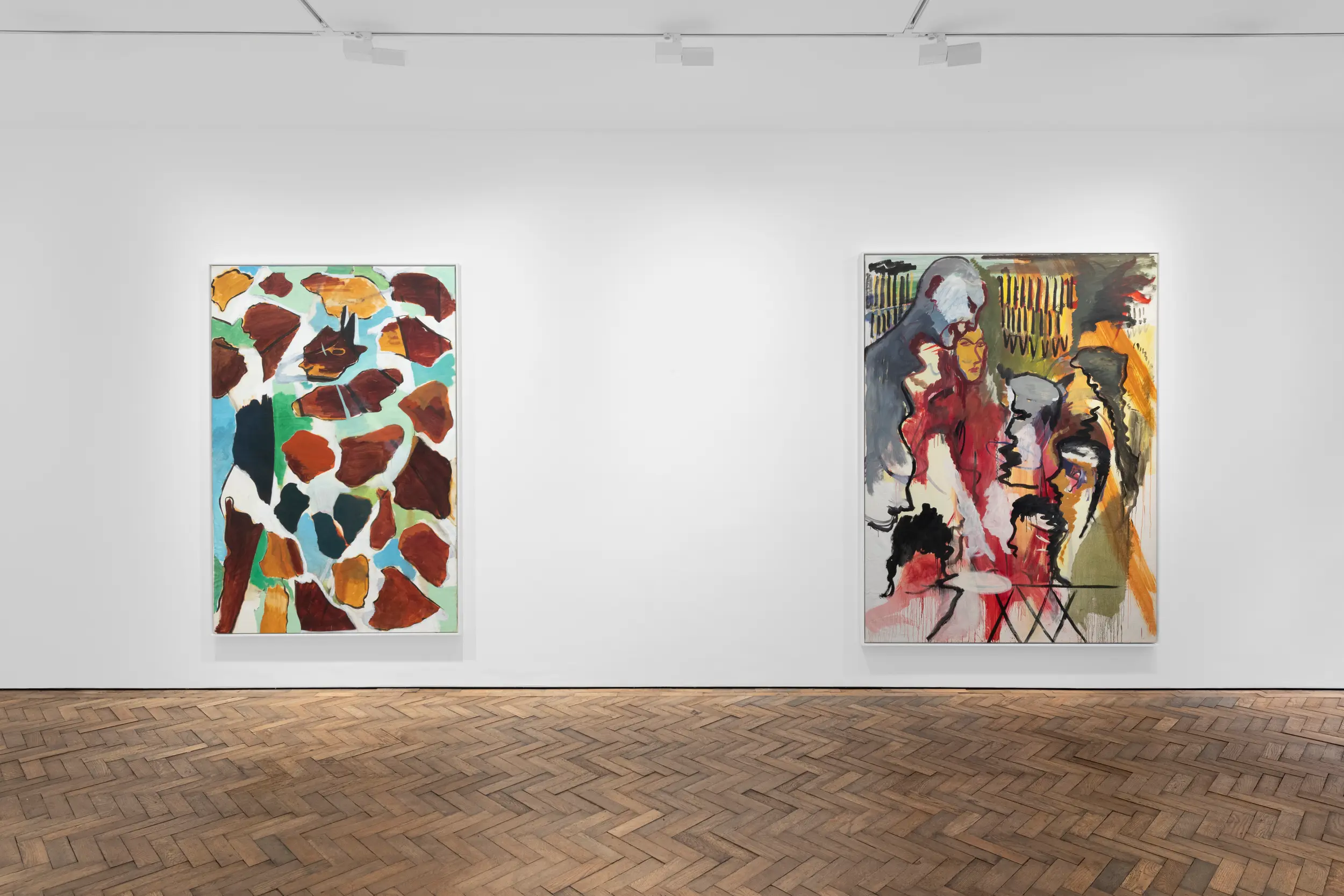
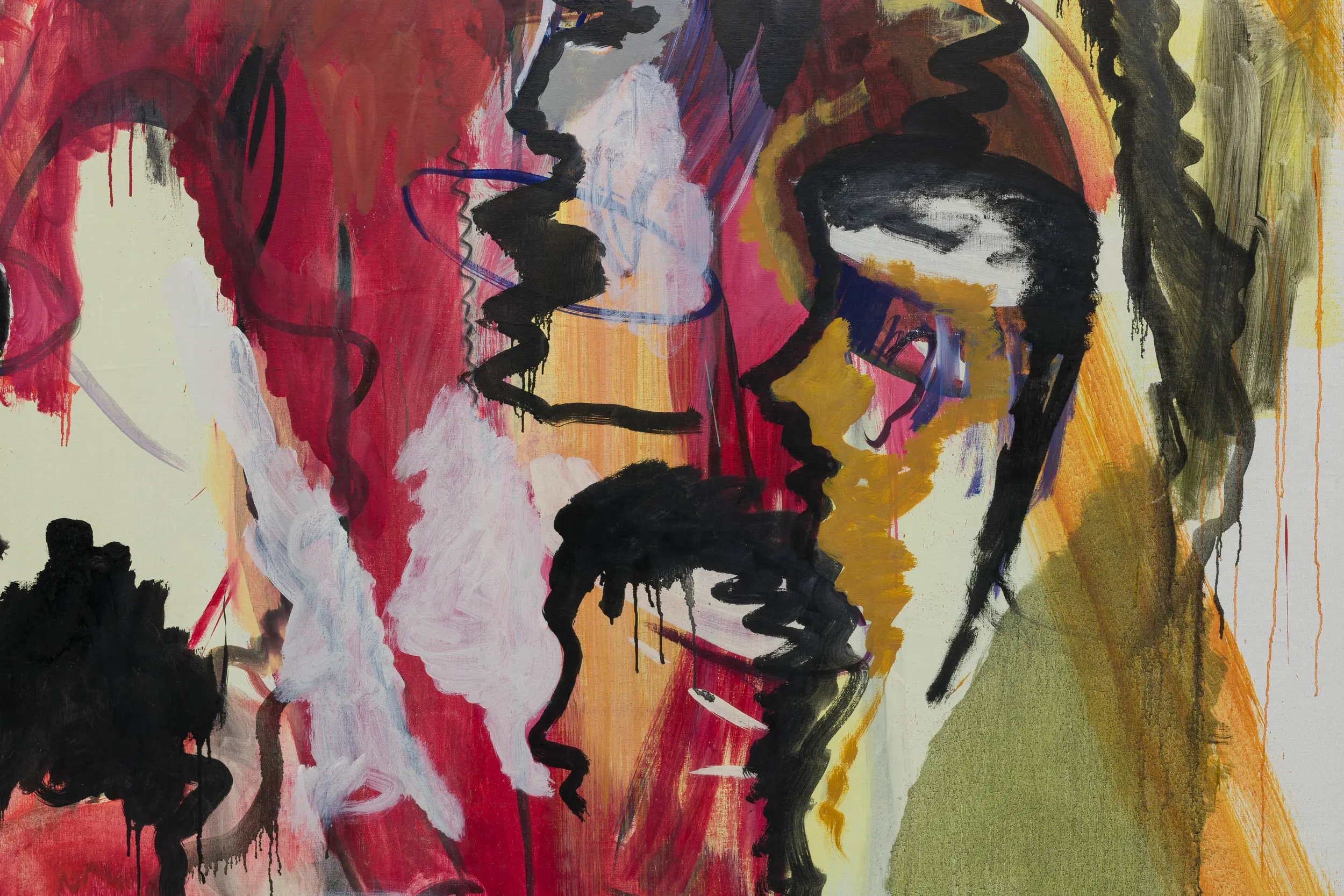
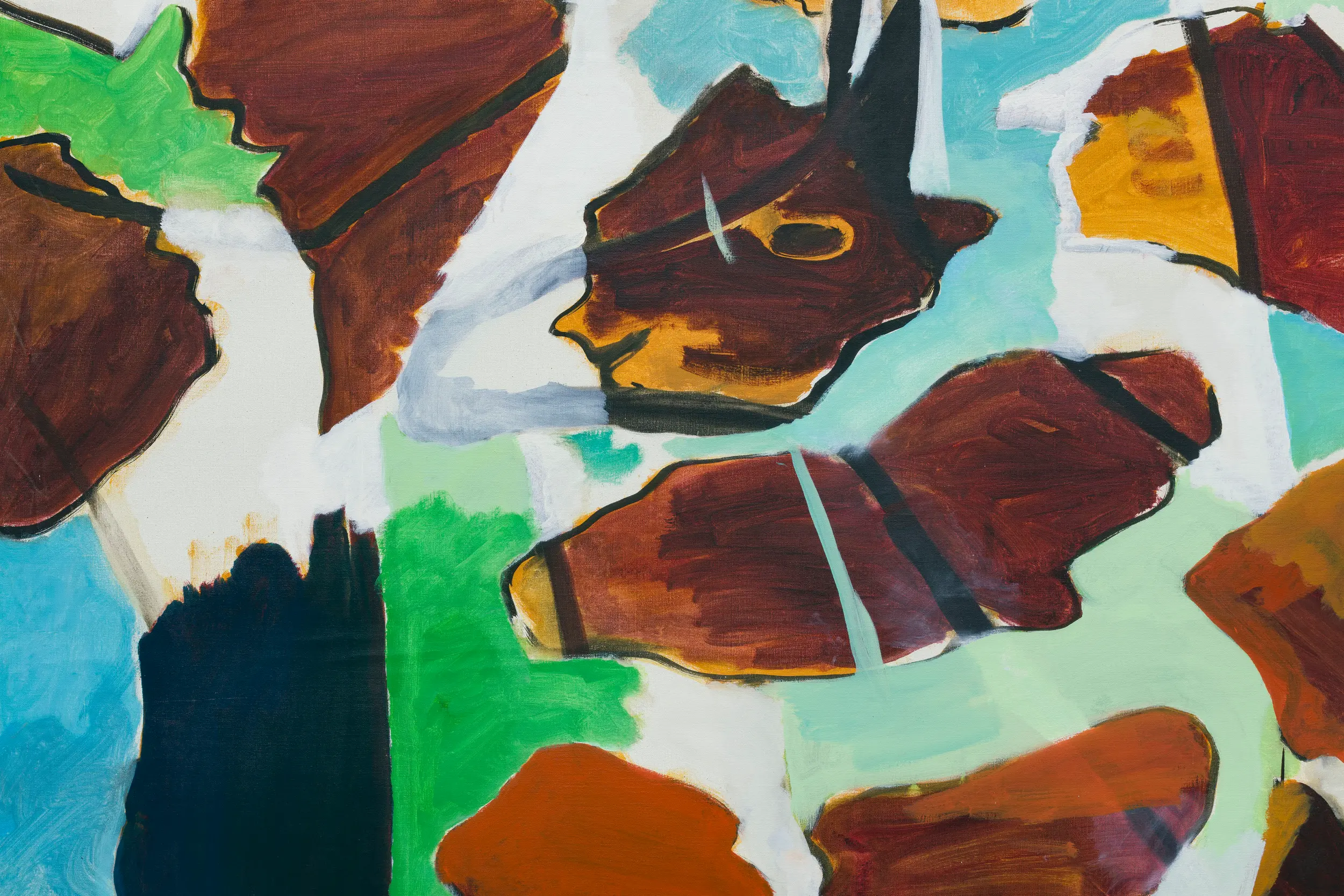
For Daniëls, Edgar Allan Poe, Marcel Duchamp, René Magritte, Marcel Broodthaers and Francis Picabia are key lodestars for their “lucidity of unique thought.” In a similar tongue-in-cheek way to these artists, Daniëls offers institutional critique through dark humour, metonymic wit, and radical self-awareness. Charting a course independent from his peers, Daniëls' oeuvre has received multiple recent revisionist appraisals including surveys at Camden Art Centre in 2011, Museo Reino Sofia (2011-2012), and WIELS, Brussels and MAMCO, Geneva (2018-2019). At a time of heightened commercialisation of the art world, his spirit of experimentation and humour undercut by a deep belief in painting lives on in the younger generations of artists working today.

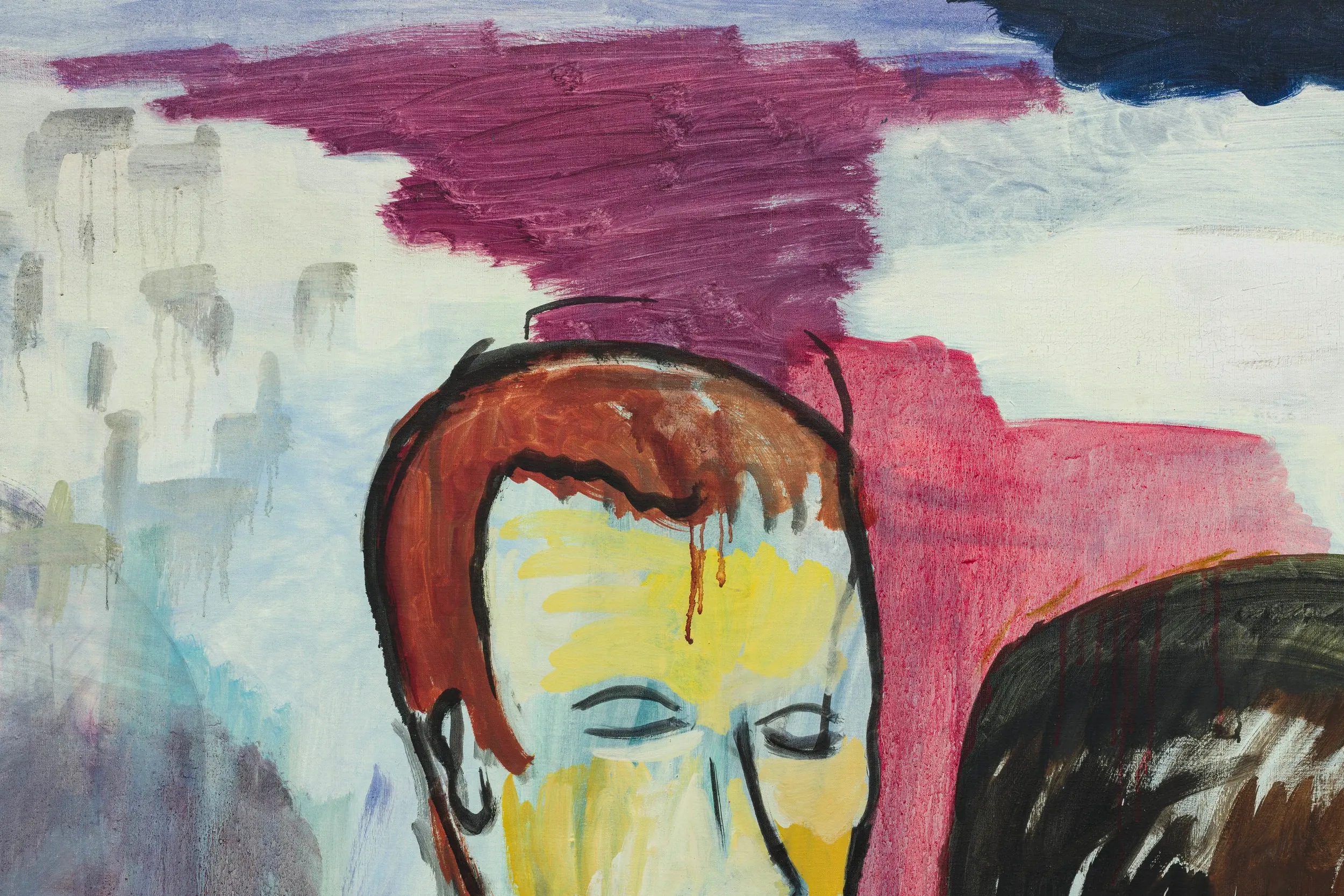
Daniëls studied at the Royal Academy of Arts and Design in ’s-Hertogenbosch and from 1983-84 attended the studio program at MoMA PS1, New York. He participated in numerous international exhibitions throughout the 1980s, among them Zeitgeist (1982), documenta 7 (1982), and the 17th Bienal de São Paulo (1983). In 1987, he suffered a brain haemorrhage that left him without speech. He resumed drawing in the 1990s, and painting in 2006. In recent years, his work has been the subject of several major presentations including the 2010 exhibition Painting on Unknown Languages at Camden Art Centre, London, the 2011-12 survey at Museo Reina Sofia, Madrid, and the Van Abbemuseum, Eindhoven; and the 2018 exhibition Fragments of an Unfinished Novel at WIELS, Brussels, which travelled to MAMCO, Geneva, the following year. Daniëls’ works are held in collections including the Art Institute of Chicago; the Groninger Museum, Groningen; Kunstmuseum Den Haag, The Hague; Kunstmuseum Wolfsburg; Museum Boijmans Van Beuningen, Rotterdam; the Rijksmuseum, Amsterdam; the Städel Museum, Frankfurt; S.M.A.K., Ghent; Tate, London; the Van Abbemuseum, Eindhoven; and the Walker Art Center, Minneapolis.
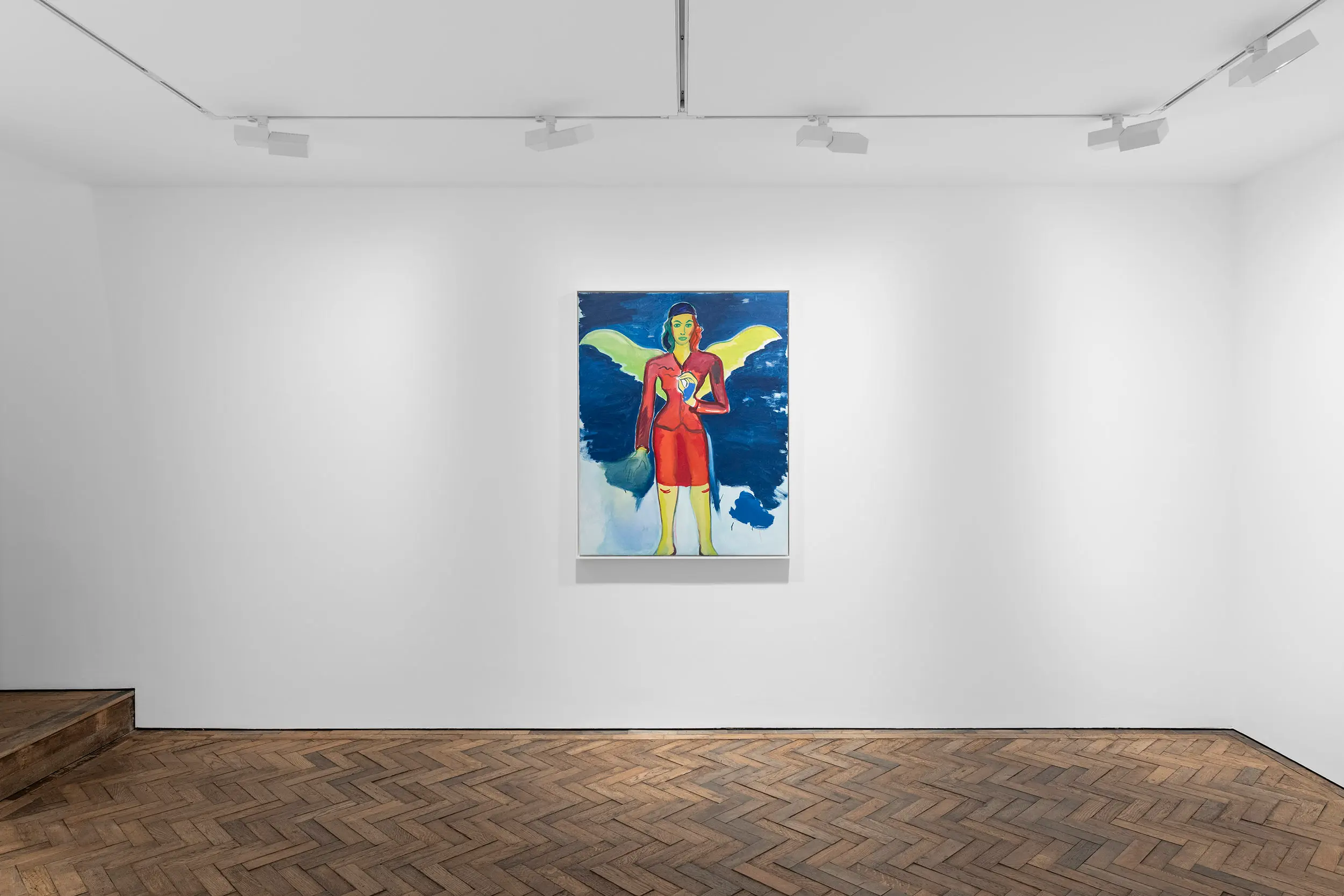
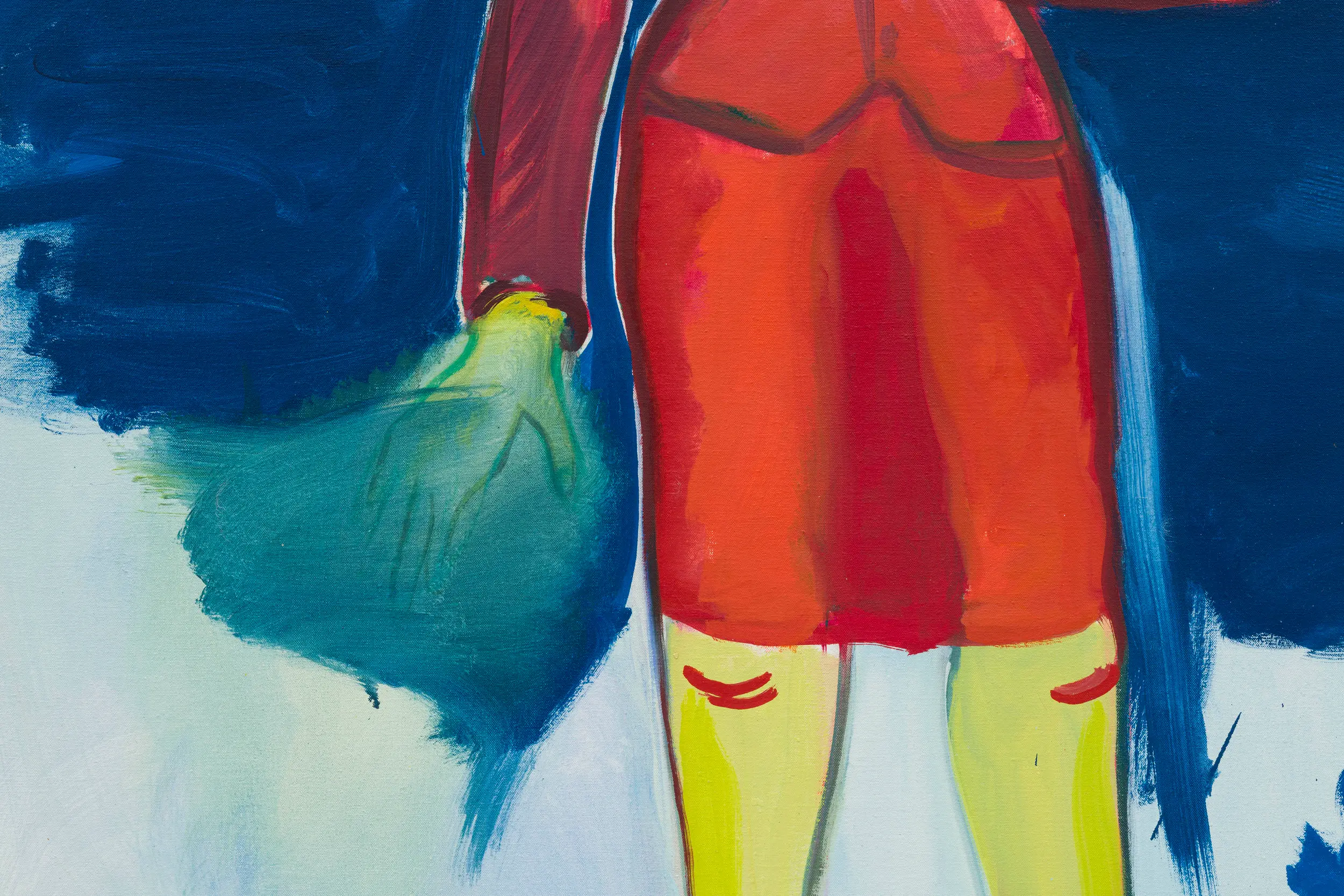
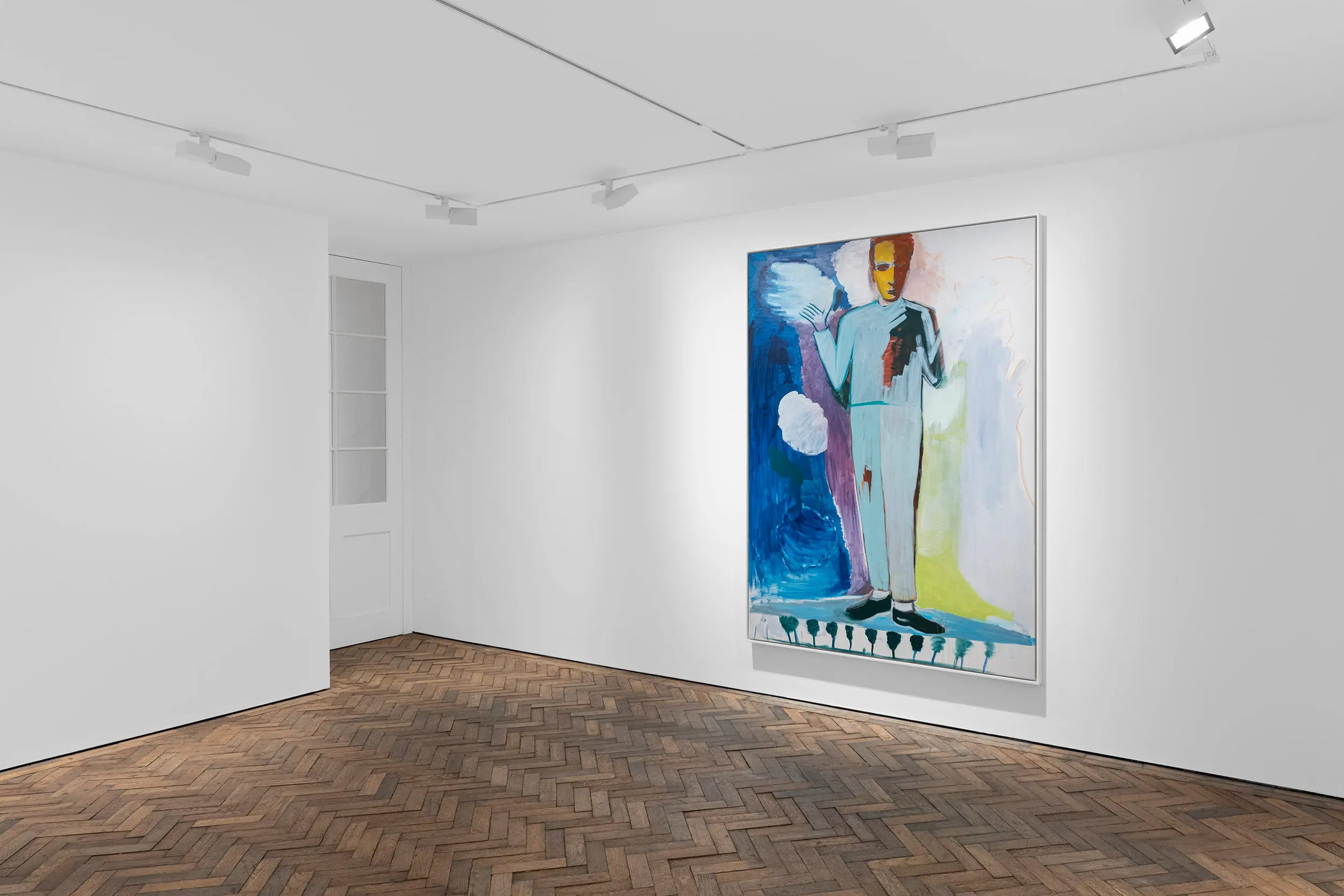
Press release
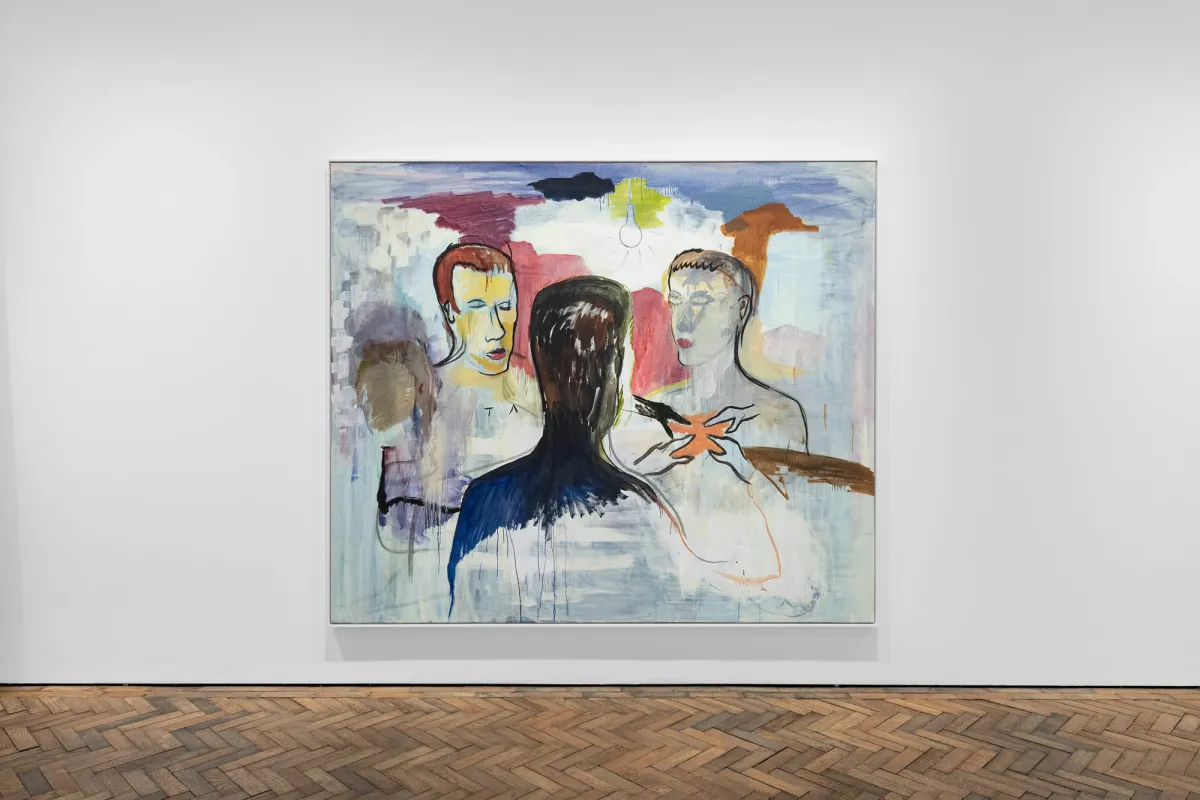
Modern Art is delighted to announce an exhibition of paintings by René Daniëls, his third with the gallery. The seven paintings span the formative period of 1980 to 1984, prior to and prefiguring the development of his signature 'bowtie' motif. Early works from this period are mainly figurative, notably loose in brushwork, and made up of several layers often revealing traces of underpaintings. Superimposed figures appear as dreamlike apparitions, floating over the canvas and dissolving into inanimate objects. Together this body of work shows how Daniëls used mysticism, ceremonial rituals, as well as woodland and jungle environments as iconography to probe the lexicons of art history and mechanisms of the art market.
Art itself has been the subject of his paintings throughout his oeuvre; what defines an artwork, how it is interpreted, exhibited - and most poignantly - how it is assigned value. Daniëls often worked cyclically, returning to certain compositions repeatedly, changing small details with each new work. Every iteration shows him ushering his subjects’ transition toward an unknown destination. His urge for transformation is especially evident in De fontein in Afrika, a painting he reworked after it was originally exhibited in 1984. The outline of a giraffe is overlayed by the pattern of its skin; only visible in the brown segments left translucent. The painting fuses different perspectives: the foreground with the background, and the sign with its interpretation. He found “objects and ideas always appear twice, once as a reality and later as the idea for a work.” These foundational paintings give insight into an artist who sought to refine his pictorial language through developing an interconnected web of double entendres and multilingual puns.
For Daniëls, Edgar Allan Poe, Marcel Duchamp, René Magritte, Marcel Broodthaers and Francis Picabia are key lodestars for their “lucidity of unique thought.” In a similar tongue-in-cheek way to these artists, Daniëls offers institutional critique through dark humour, metonymic wit, and radical self-awareness. Charting a course independent from his peers, Daniëls' oeuvre has received multiple recent revisionist appraisals including surveys at Camden Art Centre in 2011, Museo Reino Sofia (2011-2012), and WIELS, Brussels and MAMCO, Geneva (2018-2019). At a time of heightened commercialisation of the art world, his spirit of experimentation and humour undercut by a deep belief in painting lives on in the younger generations of artists working today.
Daniëls studied at the Royal Academy of Arts and Design in ’s-Hertogenbosch and from 1983-84 attended the studio program at MoMA PS1, New York. He participated in numerous international exhibitions throughout the 1980s, among them Zeitgeist (1982), documenta 7 (1982), and the 17th Bienal de São Paulo (1983). In 1987, he suffered a brain haemorrhage that left him without speech. He resumed drawing in the 1990s, and painting in 2006. In recent years, his work has been the subject of several major presentations including the 2010 exhibition Painting on Unknown Languages at Camden Art Centre, London, the 2011-12 survey at Museo Reina Sofia, Madrid, and the Van Abbemuseum, Eindhoven; and the 2018 exhibition Fragments of an Unfinished Novel at WIELS, Brussels, which travelled to MAMCO, Geneva, the following year. Daniëls’ works are held in collections including the Art Institute of Chicago; the Groninger Museum, Groningen; Kunstmuseum Den Haag, The Hague; Kunstmuseum Wolfsburg; Museum Boijmans Van Beuningen, Rotterdam; the Rijksmuseum, Amsterdam; the Städel Museum, Frankfurt; S.M.A.K., Ghent; Tate, London; the Van Abbemuseum, Eindhoven; and the Walker Art Center, Minneapolis.
For more information, please contact Sam Talbot (sam@sam-talbot.com)or Pascale de Graaf (pascale@modernart.net).